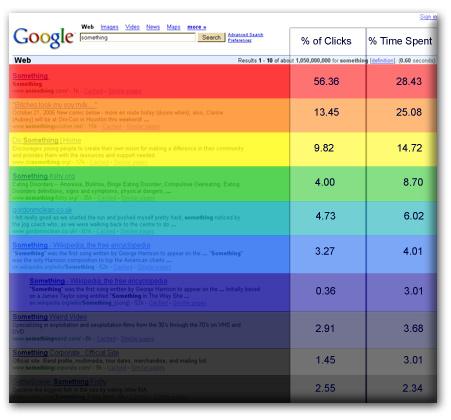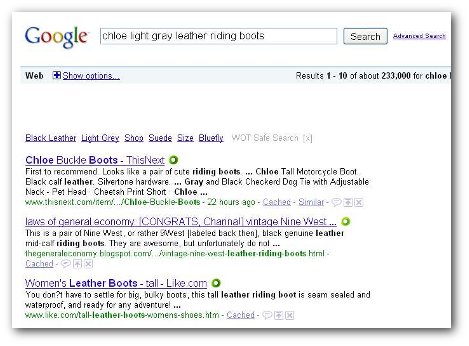The Relationship between Targeted Traffic and SERP Position

The relationship between targeted traffic and search engine ranking page (SERP) position shows that search engine optimization, or SEO, treads a fine line between being an art and being a science. Obviously there are specific algorithms that are used to rank sites for a given search query, but finding out exactly how they work is shrouded in mystery.
Even without, say, Google giving up how its search engine ranking is determined, every time there is a new factor taken into account by an algorithm, SEO researchers are pretty quick to learn in general what that new factor is, and less scrupulous site owners are ready to pounce with less than honest ways to try and game the system.
One fairly recent example is back links. Once it became general knowledge that search engine ranking and Google PageRank took back links into account, “link farms” and sites where you could buy links sprung up like so many mushrooms after a rainy spell. It was then Google’s turn to ferret out sites using these techniques and either de-list them or drop their rank significantly.
It’s like an arms race: as soon as people figure out and exploit some “new” wrinkle in SERP generation, the search engines have to find a way to stamp dishonest practices out. Otherwise, the search engines aren’t worth much to people doing real searches. This arms race continues because making it onto the first page of search results is good, making it “above the fold” (in the upper 700 or so pixel rows) is better, and ranking number one is best.
In 2006, some AOL search engine ranking data was leaked, and SEO researchers pounced. The analysis showed that the number one position brings with it a 47% average click through rate. Positions two, three, and four have click through rates of 13%, 9%, and 7%. Clearly, bringing your ranking up from third or fourth to first makes an enormous difference in a site’s traffic and its bottom line if it is a commercial site.
 Of course, these figures are only approximations, but they do seem to hold water. People notice great differences between their statistics between the top rankings. Anecdotal evidence suggests that going from the #2 to the #1 spot can increase traffic by 100% or better. Dropping from #1 to #2 corresponds to a 30% to 50% drop in search volume.
Of course, these figures are only approximations, but they do seem to hold water. People notice great differences between their statistics between the top rankings. Anecdotal evidence suggests that going from the #2 to the #1 spot can increase traffic by 100% or better. Dropping from #1 to #2 corresponds to a 30% to 50% drop in search volume.
As you move downward through the first SERP, the rate of decline of click throughs falls, and one interesting quirk that could be an artifact is that the number 10 position gets a slightly higher rate of click throughs than the number 9 position. Some speculate that users will be more likely to glance at the last listing while scrolling down to suggest searches or page navigation buttons. Once you move off the first SERP you’re close to being invisible. For all but the very highest volume queries, the non first SERP listings will generally offer no benefit to site owners except in unusual situations.
A factor in your SERP position is the quality of your site’s meta data. To ensure that your web pages get the best shot at appearing high in the search engine results, you need to give some thought to the meta data in your web pages. Meta data is data describing other data. For your web page, meta data includes things like the page title, keywords, and description.
In Google, the display of a “snippet” of your site will be longer, the longer the query is leading to the site. In other words, a detailed query that hits your site will sometimes show a three line snippet rather than the traditional two line snippet. The main reason this makes a difference is that it can in some cases limit the results shown “above the fold” to the top three results rather than four.
As you can see in the accompanying screen shot, a search on “chloe light gray leather riding boots” results in a long snippet for the top result, though the others in the top ten are still short snippets.

A good snippet can improve click through rates, and you can be sure that if extended snippets cause only three listings to show above the fold, then position in the top three results becomes even more important. In other words, yes, people are too lazy to scroll down in many cases.
Now, while the extended snippets come from actual content of the page it refers to, meta data is used in other cases. A well-optimized page has a title containing the target keyword phrase, and the keyword phrase from the title (with slight variations) should be made of phrases most used to find your page in the SERPs. Putting all the title keywords into the meta description will maximize the number of times your meta description is shown as your snippet. If the meta description contains all of the keywords from the user’s search phrase, it will be used as the search snippet for your page.
The meta description should also contain, if possible, a call to action that will make the user want to click on through to your site, and the description should be accurate so that the user doesn’t jump right back to the SERP from your site. A well optimized meta description, title, and a URL that is rich in keywords can all work together to boost your click through rate even if your site is ranked third or fourth rather than first on the SERP.







